We’re excited to share a blog from one of our members. Below you’ll find a blog from John Hamilton. We hope you find learning about his late Uncle’s private project and John’s own Apse project as interesting as we do.
Warmhill and Hengrove woodland, approximately 100 acres situated on the edge of the Forest of Dean was bought by my uncle, John Newton, in 1967. He had been involved in the early days of the setting up of Fountain Forestry, and later lectured in Forestry at Aberdeen University, but this was to be his own private project.
Image provided by John Hamilton
There was some Oak in the woodland, about 30 acres of recently planted Sweet Chestnut and an area of Norway Spruce planted as a Christmas tree crop, but the majority was scrub which he set about clearing. Over the next 7 or 8 years he planted, largely on his own, about 50 acres of Larch and Douglas Fir.
Unfortunately, he passed away 6 years ago, just as the wood was starting to reach maturity and become productive – and the home-grown timber market was starting to open up – and I now manage the woodland on behalf of my cousin. He had left us 100 acres with huge potential – you could call it a ‘woodland heritage’ – but how were we to take it forward?
Image provided by John Hamilton
In the last few years, we have refurbished and enlarged the forestry shed that was built over 40 years ago, and obtained change of use planning to include woodland crafts and courses, and timber-related light industry.
Image provided by John Hamilton
18 months ago, we invested in a sawmill, a Norwood Lumberpro, and together with a local artisan timber framer, Lucian Quatermass, who has worked on a wide variety of projects, including the refurbishment of historic buildings, we started to convert some of the timber growing in the woodland with the aim of using our own wood to make our own products. For the building of structures from our own timber, we decided on the name Deepdean Design.
I also discovered and became a member of, Woodland Heritage. Their philosophy and aims seemed very much in tune with not only what we were trying to do in our own small way, but what was beneficial to the development and promotion of the woodland sector as a whole – and which I’m sure my uncle would have wholeheartedly agreed with.
With hindsight, our first project was a little ambitious. Lucian had a great interest in historic architecture, especially collared arches, and came up with a design he called the ‘Apse’ – the name for a domed or arched recess in a church.
Image provided by John Hamilton
The obvious choice was an oak frame, but cutting the curved arches out of a straight piece of oak demanded a very wide board and a lot of waste, and anyway we simply didn’t have any oak in the wood large enough.
What we did have was larch which we knew to be a tough and durable ‘softwood’.
The larch had been felled in January 2022, and we started milling in March. The work was carried out at weekends and evenings as it was a speculative project and a living had to be earned!The joints were all mortis and tenon, to be secured with hardwood pegs – 168 of them in all, and carried out in our newly refurbished workshop. As a prototype, every joint had to be assembled and fine-tuned, then taken apart again.
Eventually, the main part of the structure was assembled in the yard at the wood.
During the process, we had been touch with Peter Dowle, a near neighbour at Howle Hill Nursery, who is also a garden designer. As well as being a multiple Chelsea Flower Show gold medal winner for his gardens, Peter supports local artisan businesses and has moved to open a garden centre site called Leaf Creative, at Huntley, Gloucestershire.
It was agreed we could install the Apse at Leaf, and so in February 2023, we disassembled it from the wood, and took it to Huntley, where we constructed it.
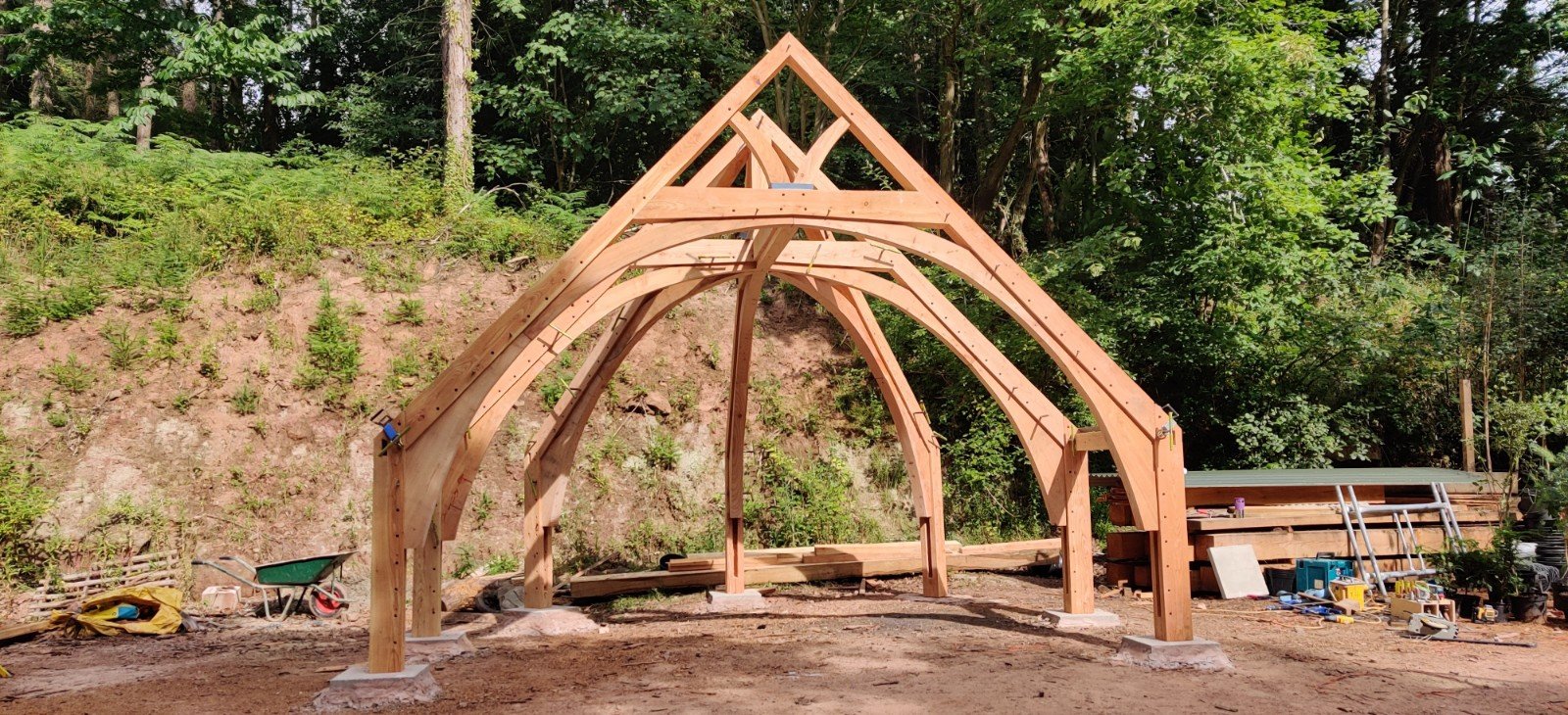
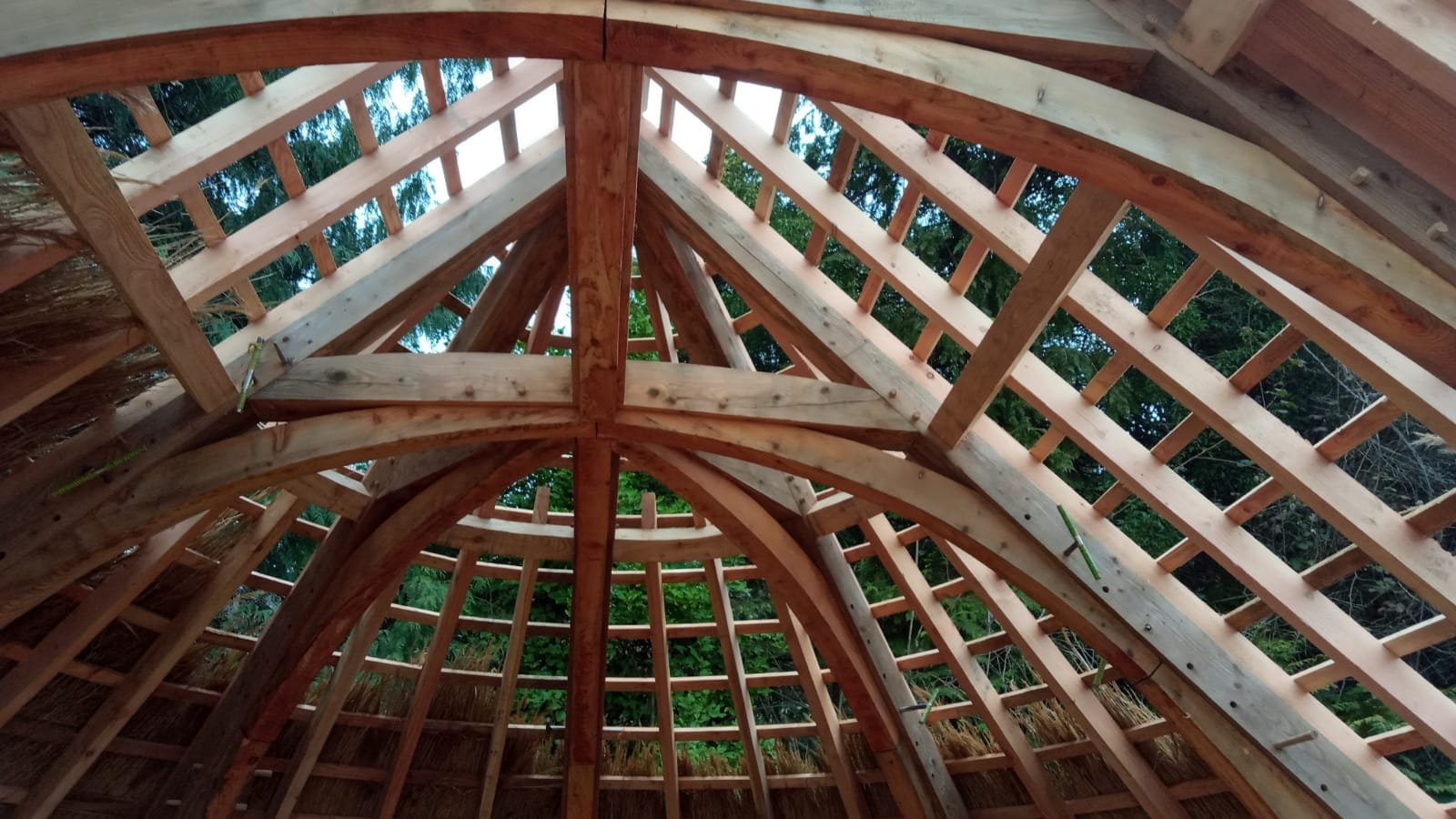
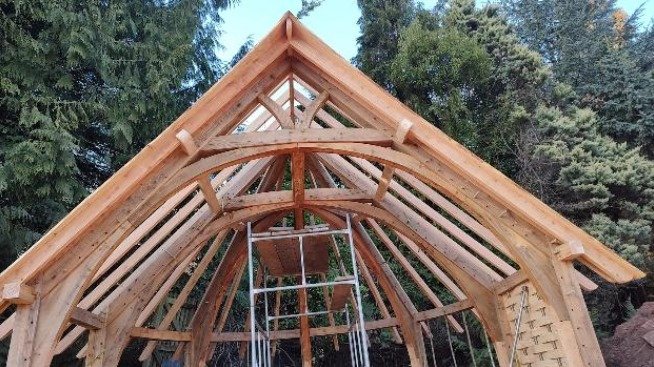
We were keen for the finished structure to have a fitting roof, and I knew a thatcher who lived outside Hereford. Wooden shingles or even tiles were an option, but we reckoned the thatch would give it added depth.
The build was completed a few weeks ago.
The side panels are vertical hazel rods from the wood with woven thin strips of larch. The floor is boards of sweet chestnut from a large tree blown down in the gales early last year.
Applications? Well, we reckon it would make a fitting wedding venue, or a medieval bandstand, or just a place to sit and admire the view…
It has been an interesting journey. It’s just a shame my uncle isn’t here to see it.
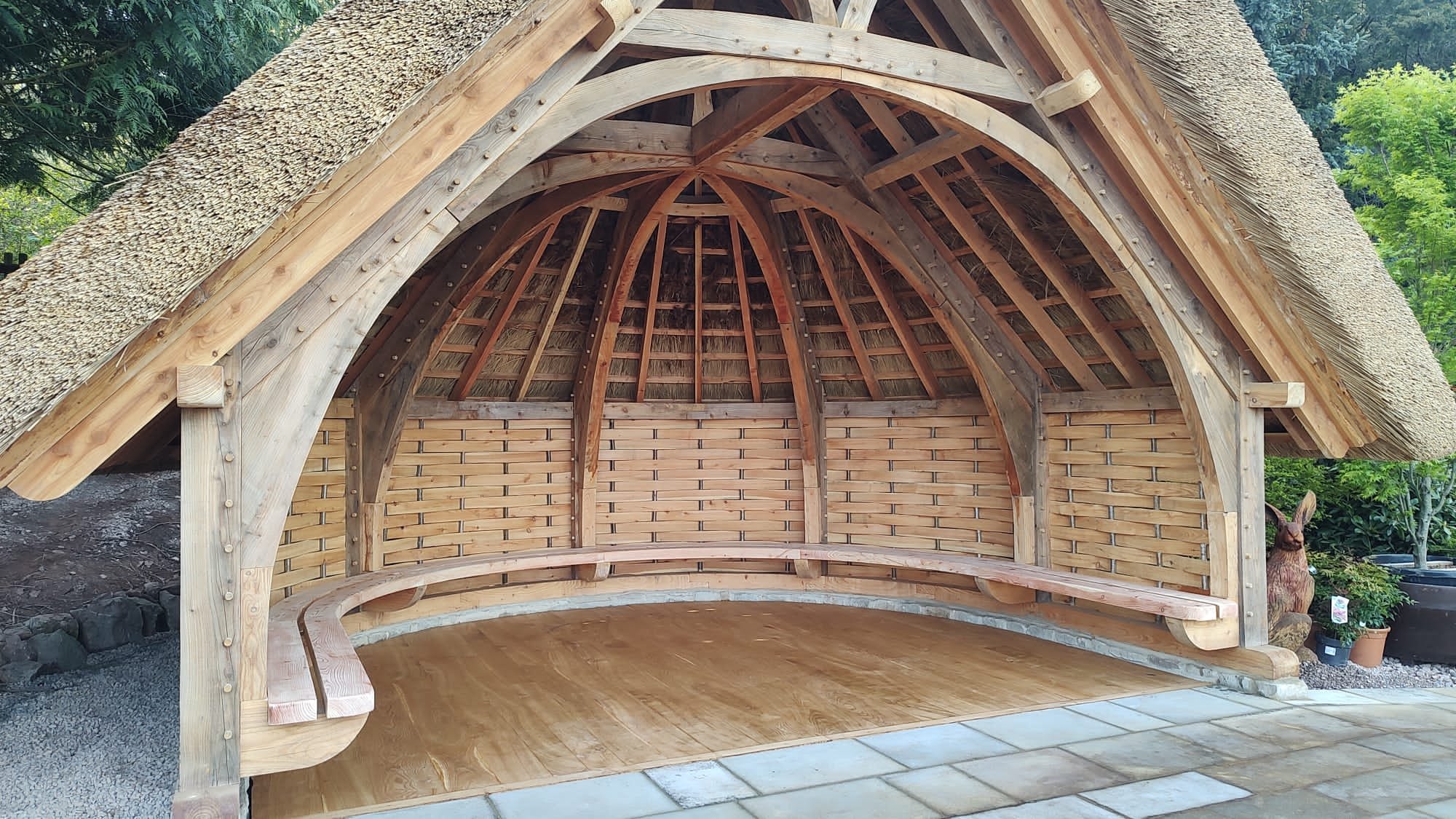
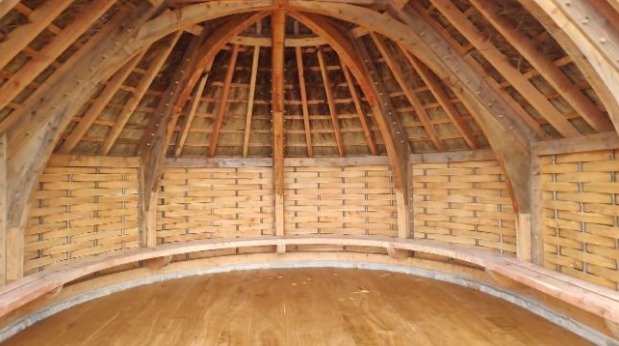
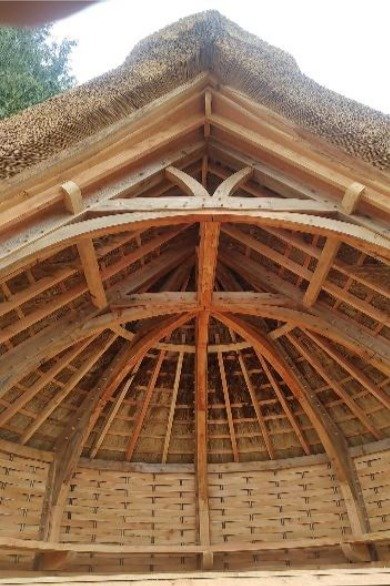
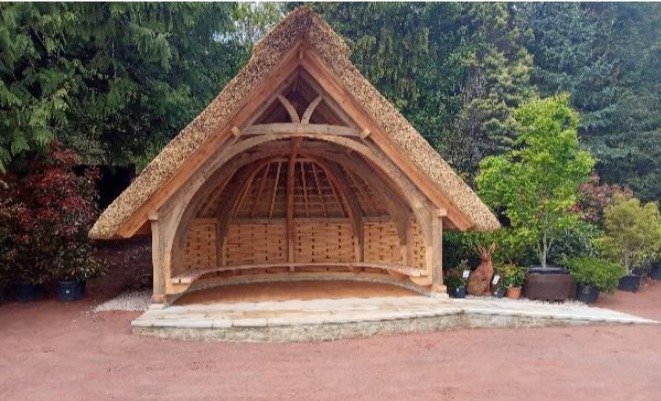
Author: John Hamilton
Last updated: 09/05/2023
If you’re a member of Woodland Heritage with a story to share, we’d love to hear from you!











